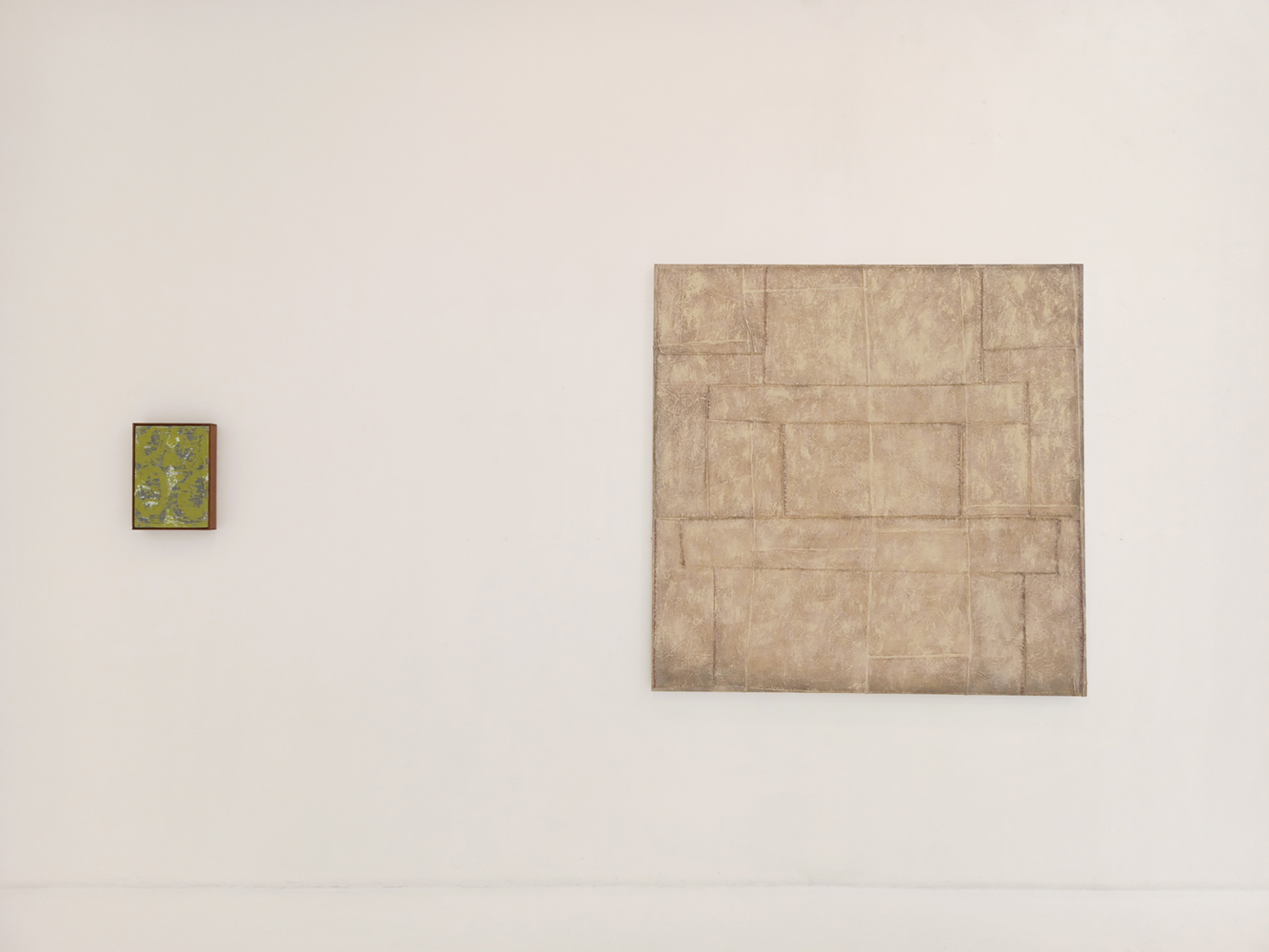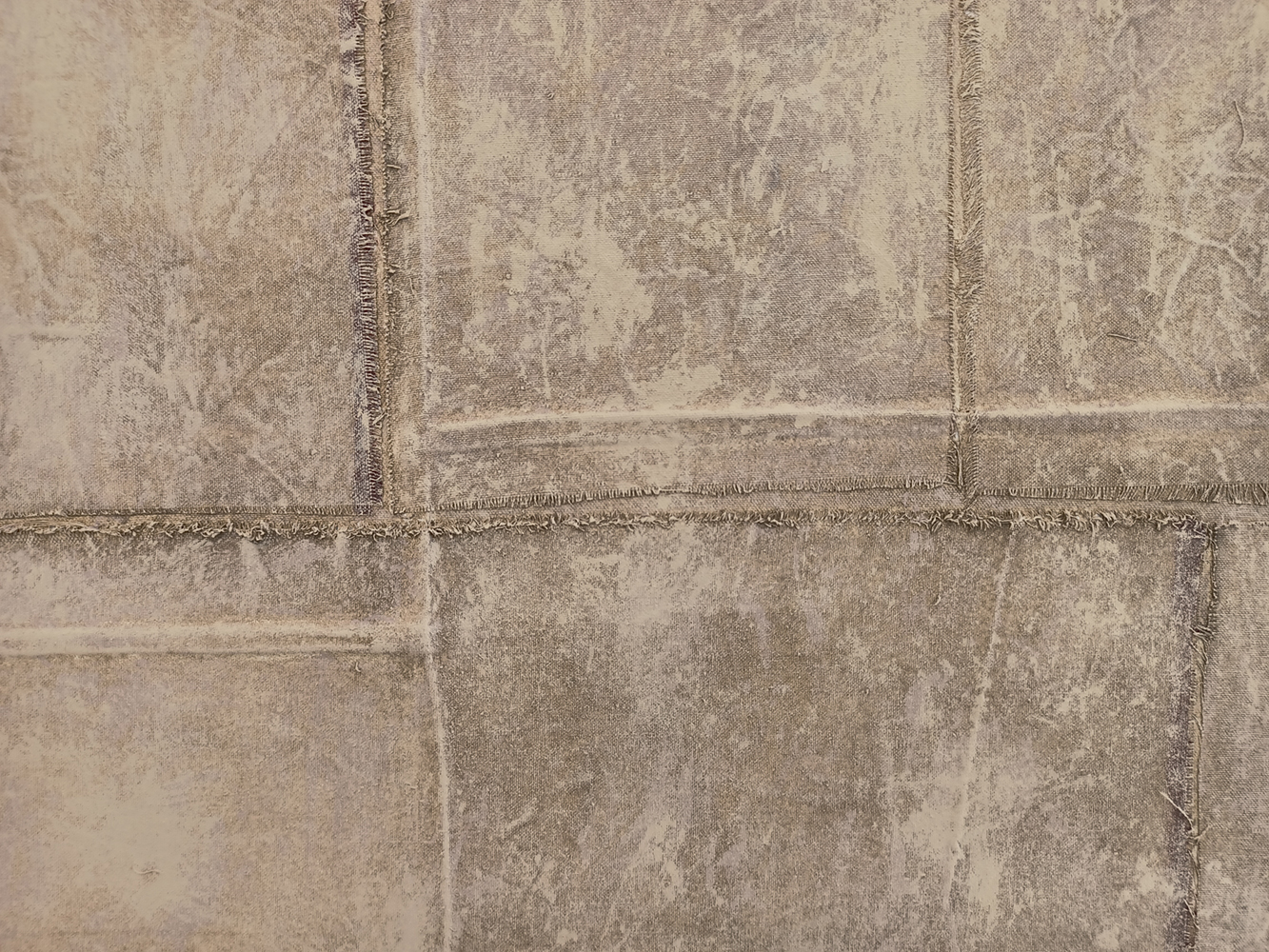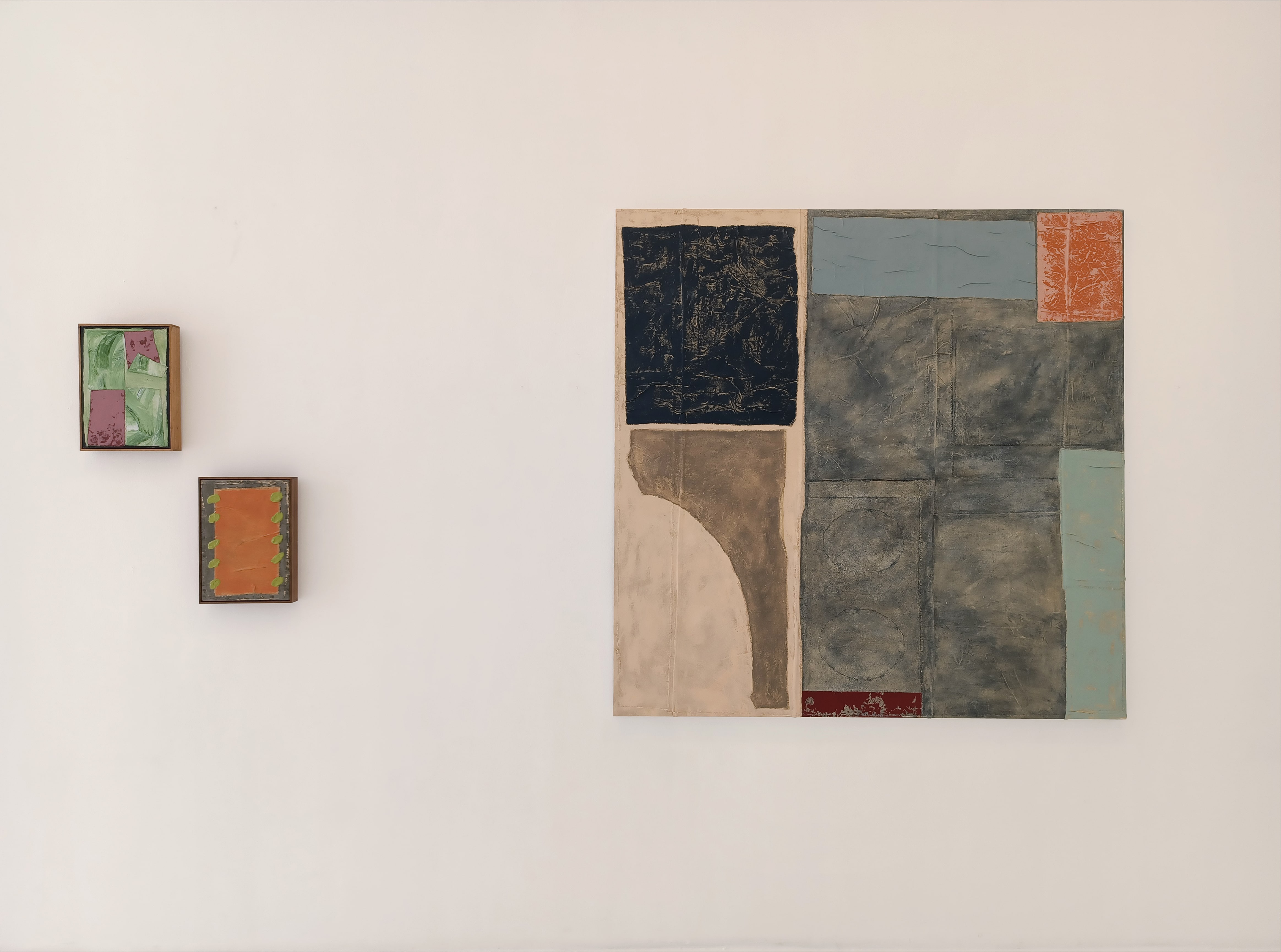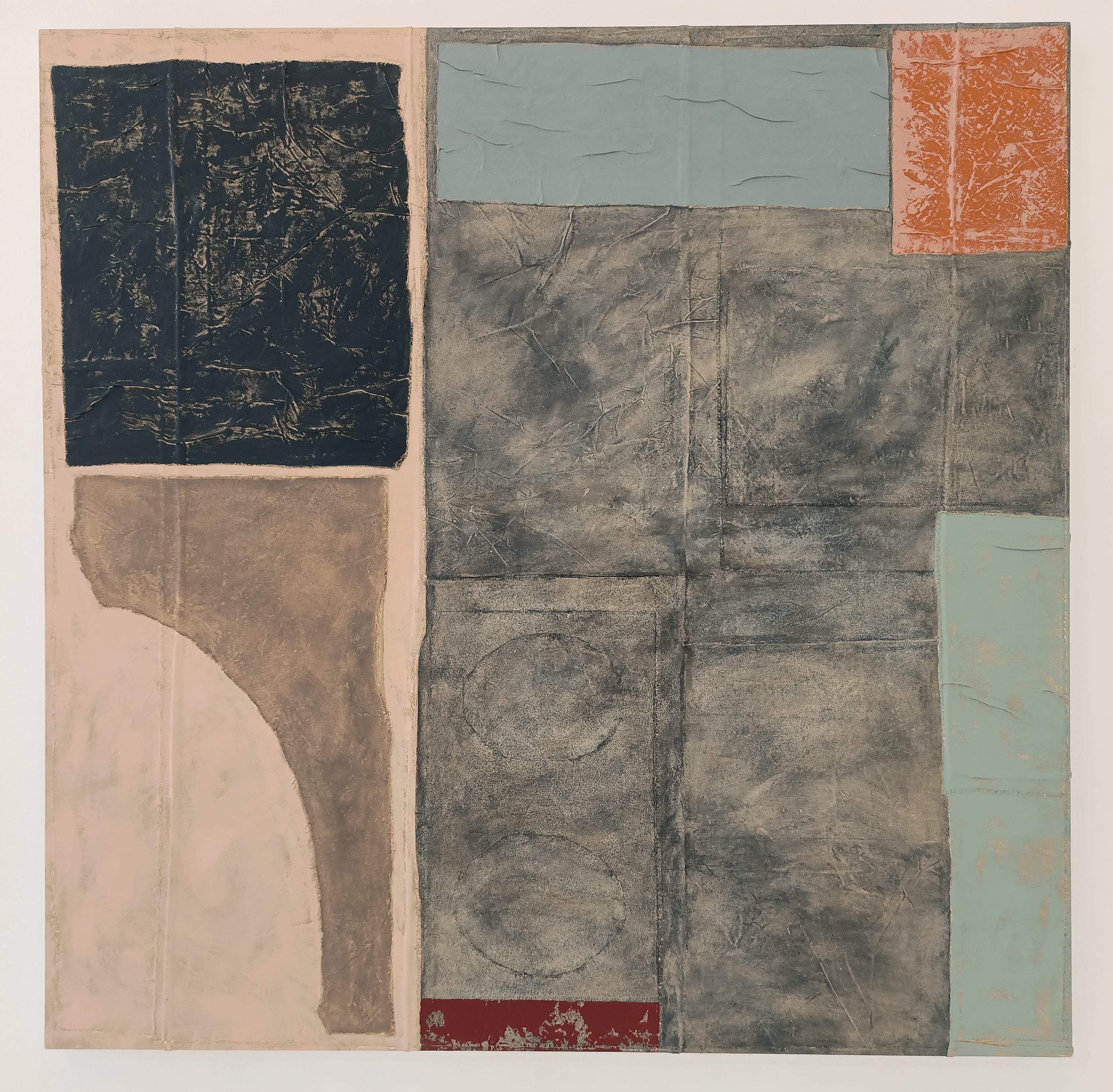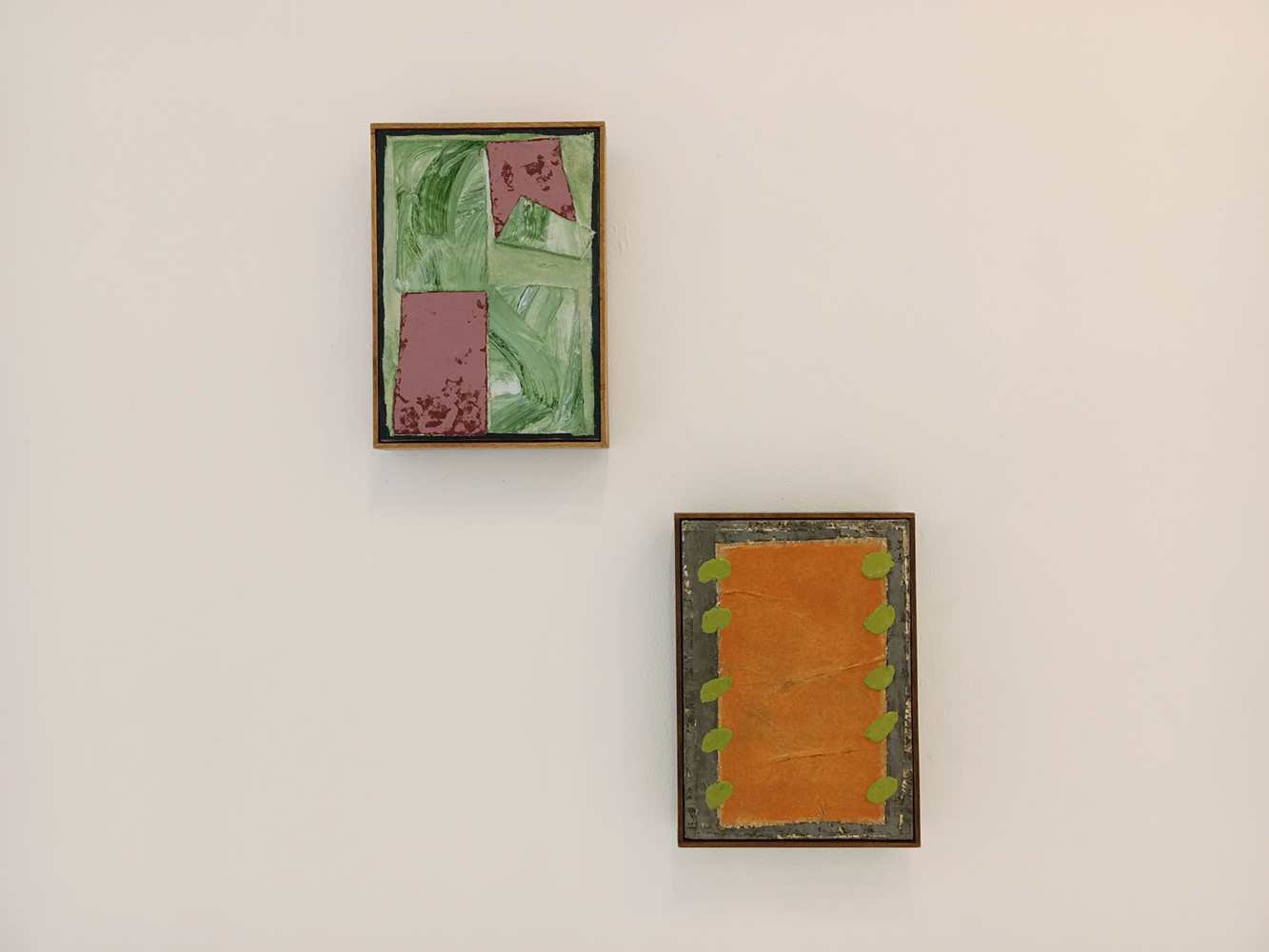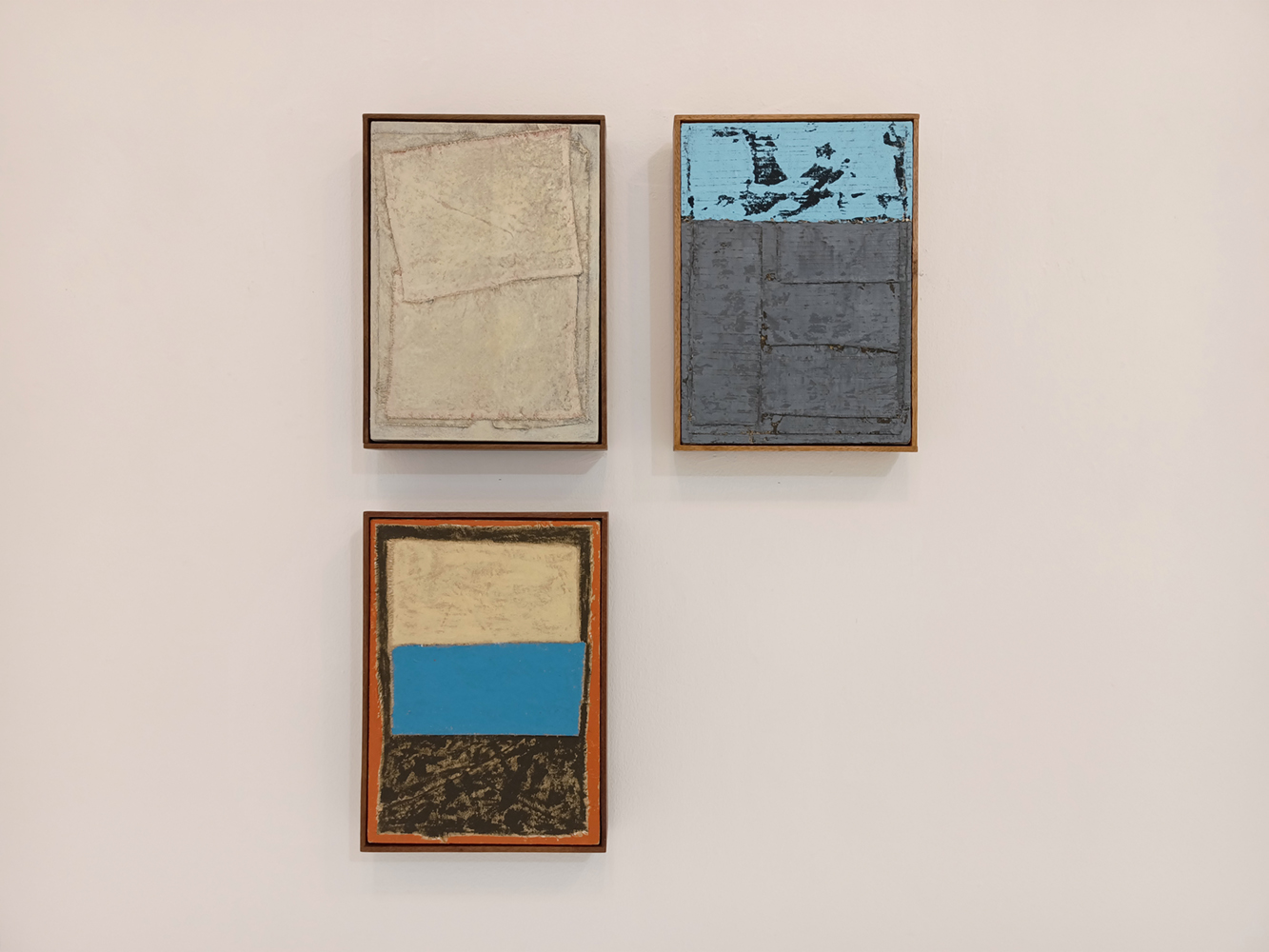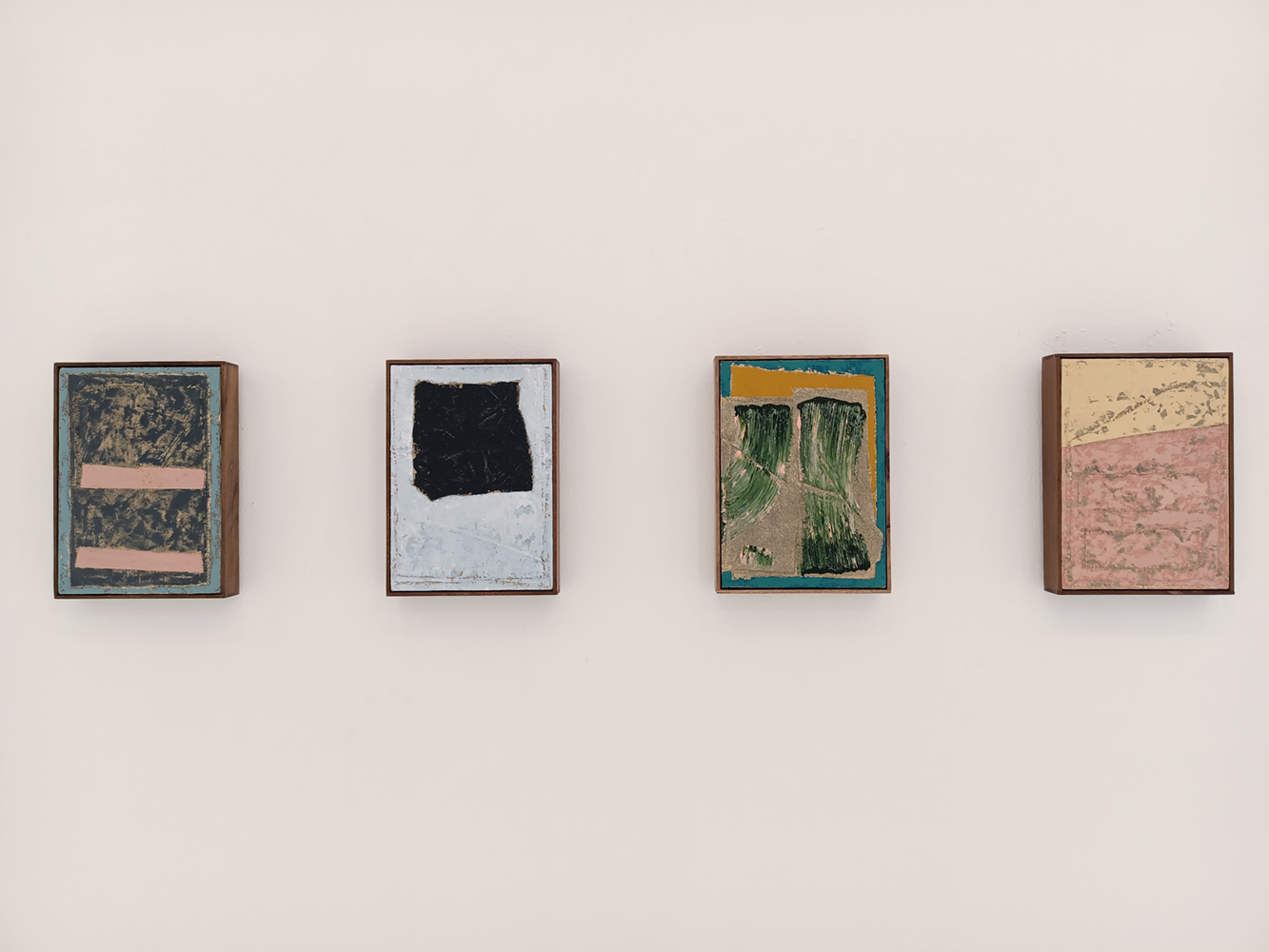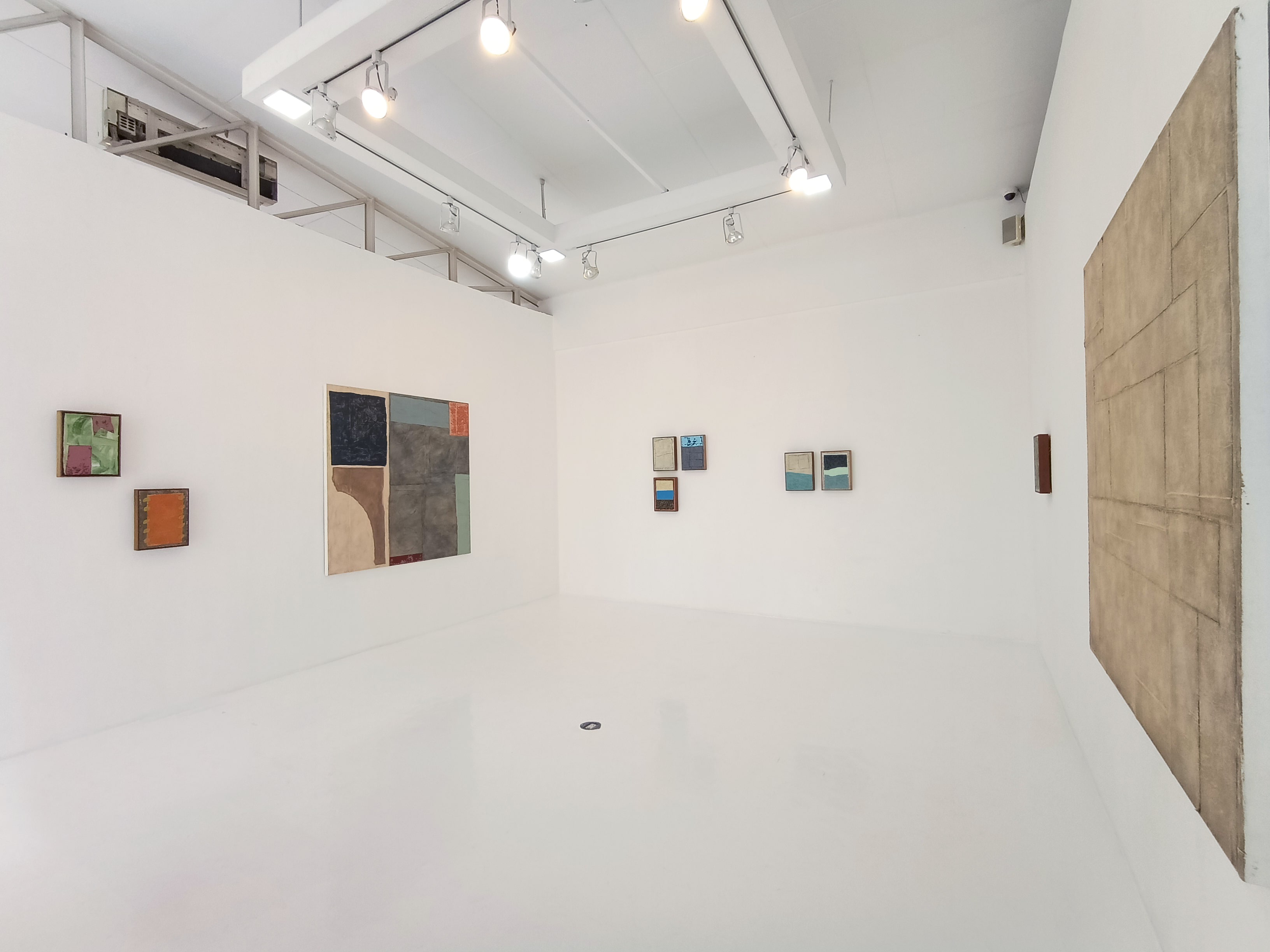Swaths of paint and scraps of fabric come to make up tapestries of past mistakes and disappointments in Jonas Eslao’s The Path isn’t Always a Straight Line.
The exhibition — which is mounted in Blanc Gallery — is anchored on the idea of ‘course correction’, a term in space navigation. Referring to the recalculation of a spacecraft’s vector when it veers off its trajectory, it is in essence a process of comparison, navigation, and finally creation.
Finding their purpose and value in their structure, durability, and versatility, the textile fabrics of Eslao’s works instead foreground their vulnerability and predisposition to deformity.
Road to Harmony, 60x60 inches, acrylic on textile (2022).
One of the two largest pieces of the ensemble, Road to Harmony, documents the artist’s attempt and determination to attain some semblance of perfection and balance. Yet, rough, frayed edges and shadows of previous patches contour the surface. The plane struggles for symmetry and alignment as its composite fabrics try to find or adhere to a discernible albeit shaky structure.
Hanging on the opposite gallery wall, is the only other monumental, equal-sided piece, Ready to Conquer Obstacles, and beside this, dwarfed in comparison, are Flip Side and Maintaining Balance. The titles suggest a conversation between the works, reflecting on one another’s position in a nonlinear continuum. Oscillating between the technical and the personal, they resemble field notes and meditations or private notes, as the artist navigates his trajectory.
Left to right: Flip Side, 14x10 inches, acrylic on textile (2022); Maintaining Balance, 14x10 inches, acrylic on textile (2022); Ready to Conquer Obstacles, 60x60 inches, acrylic on textile (2022).
Maintaining Balance seems to respond directly to Road to Harmony, intimating the attainment of ‘harmony’ and, perhaps more so, the struggle of keeping it. Eslao is cautious with revealing his intentions. There is no discernible structure — perhaps it’s underneath. There’s no way of knowing the number of layers. The artist leaves no trace or record of when colors were decided and added.
One is left to speculate: green mounds of paint reinforce an orange piece of fabric that may have refused to adhere to the canvas. Or perhaps we are to find the balance in Eslao’s rough alignment of five roughly-identical green daub on either side of the plane, as they also straddle the orange and grey fields.
Left to right: Flip Side, 14x10 inches, acrylic on textile (2022); Maintaining Balance, 14x10 inches, acrylic on textile (2022).
Also apparent in the series is the ambiguity of paint's role and purpose. Its application, distinctly rash but compositionally calculated, at once facilitates the coverage of something undesirable but exposes in the process the unevenness of the surface below.
The show treads between the notion of human autonomy and the unfathomable nature of the Universe, as each piece carries imprints of the artist and intersects with chance. The re-appropriation of the materials asserts Eslao’s control and capacity to correct his trajectory past all the obstructions, delays, and unexpected disruptions en route, traceable to the artist's difficulty or limits with working with fabric and paint.
As with many if not all abstract expressionist works, one may be inclined to question the purpose and meaning of each work in this series. And so one should: Eslao fits comfortably in the long tradition of gestural abstraction that abandoned subjects and figures in favor of emotion and feeling. We find in the verticality of the smaller color fields, portraits. Overlaps, cracks, creases, and clumps of paint narrate past mishaps and outline the inevitability of future mistakes. But, with each, Eslao demonstrates conviction in one’s capacity to find a route that works, providing an assurance of one’s destination.
Exhibiting since 2007, Eslao’s oeuvre has a distinctive environmental focus, often engaging in the dialogue surrounding human intervention in nature, and closing in more specifically on our role in the changing climate. And so does The Path isn’t Always a Straight Line guide our gaze towards the layers upon layers of scrap fabrics to uncover the artist’s imperfect but intrepid scramble towards a conclusion. Whether this is satisfying or satisfactory does not seem to be the point, as Eslao’s treatment of form over content has made clear. And with that, he seems to implore the viewer to do the same — to confront the past and remain active in directing the present.
This exhibition is beset with hypotheses, uncertainties, and ambiguities, but one can walk away comforted with one salient truth: that paths may meander, even falter, but will always lead us where we are destined to land.
The Path Isn’t Always a Straight Line is on show at Blanc Gallery in Katipunan Avenue, Quezon City, until April 30.

